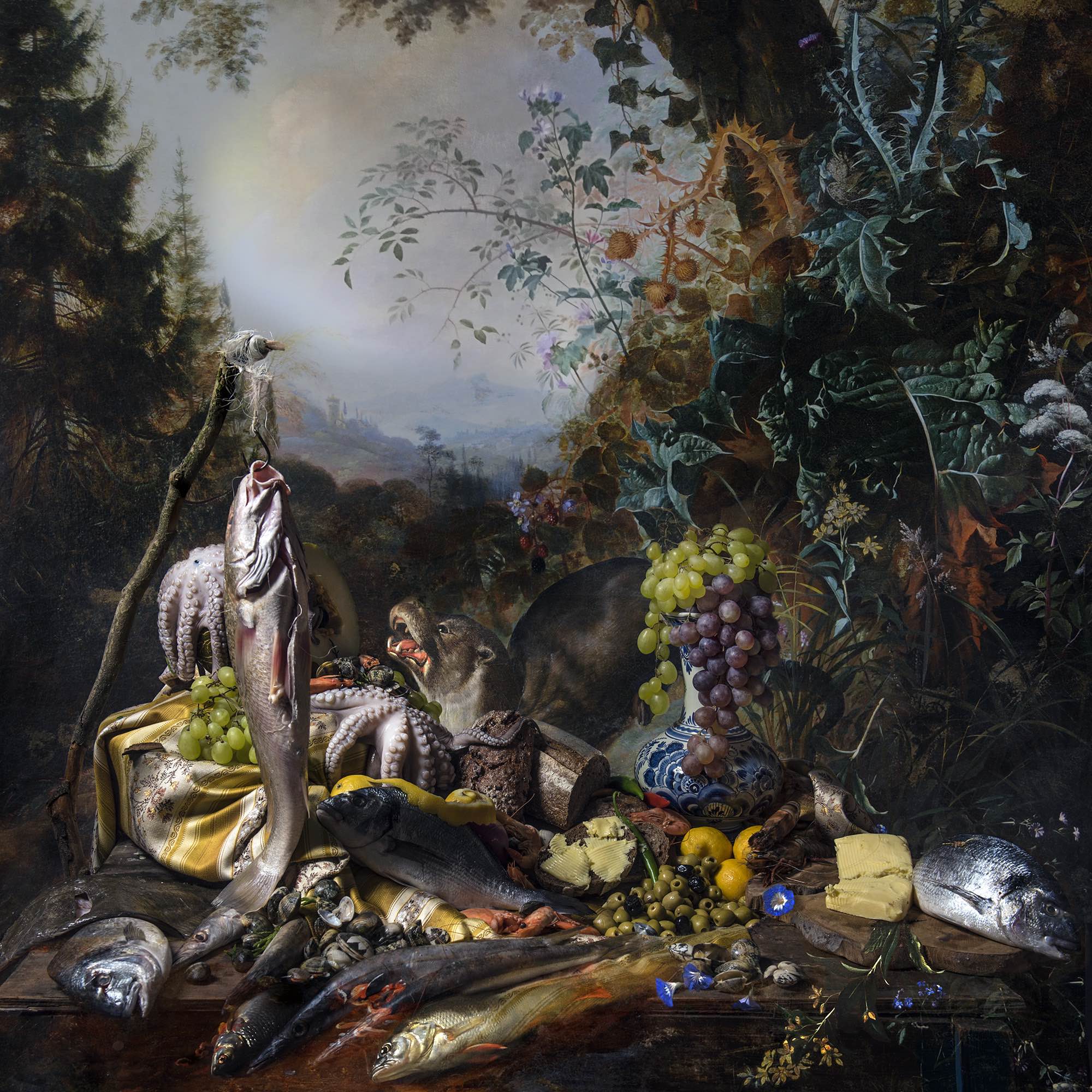Hans Withoos’ photography career spans more than twenty years; although highly successful in his commercial and international fashion work he also is prolific in his autonomous work, making many photography series over the years. The beauty of symbolism in his newest work “Withoos meets Withoos“, stilllifes. Even this stilllifes are recognizable for his work, same dramatic light and full off layering.
Until 21st May 2018 a solo exhibition of his work and some original paintings by Matthias Withoos can be seen at the Westfries Museum: exposition website > wfm.nl/withoos-meets-withoos.

Hans, where do you get your inspiration?
My main inspiration comes from historic works of art and ancient myths. For example: in 2013 I worked on a theme ‘The Muses of Klimt’ and in 2007 ‘Medusa’s Raft’ was an inspiration for my own work. During my long career as an artist, I also portrayed Ophelia in many different ways. Apart from that I love the positioning of the figures in ‘La Grande Jatte’ by Seurat.
In fact, anything can inspire me and help create my own dream world.
In my latest series ‘Withoos meets Withoos’ I was inspired by the art of my 17th century great-great grandfather Matthias Withoos, a famous Dutch painter. He was part of the group ‘The Bentveughels’. He worked in The Netherlands and France and in Rome, where he was taken under the wing of the Medici family. On his return to The Netherlands he used his sketches to create a new reality: landscapes, pleasure grounds, city views and woodland scenes. They were all products of his imagination, full of symbolism. When I study his paintings I respond in different ways. I look at the way he paints, at the subjects he uses, at the tiny details, or I sometimes use his work as a romantic background.
These works are perfect examples; the original 17th century painting “Masked Woman in a Carriage in River Landscape“, Matthias Withoos, Private Collection
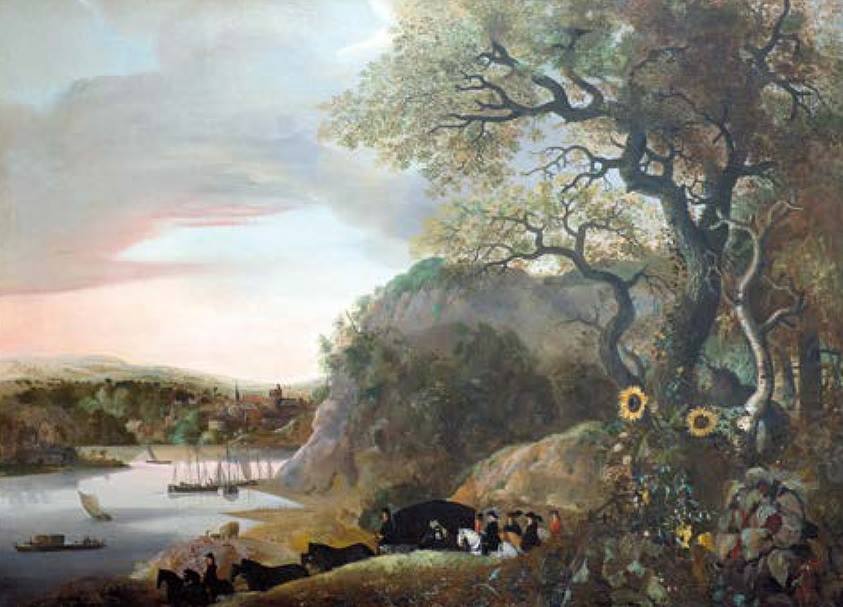
Masked Woman in a Carriage in River Landscape, Matthias Withoos, 17th century.
In my first work I used the idea of a cat waiting for its owner to come home. The cat is naked, the owner is masked. I was inspired by my own dogs waiting for me to come home. You can see the original painting through the steamed-up window, but also in the reflection in the grand piano. In this way, I bring the outside in.
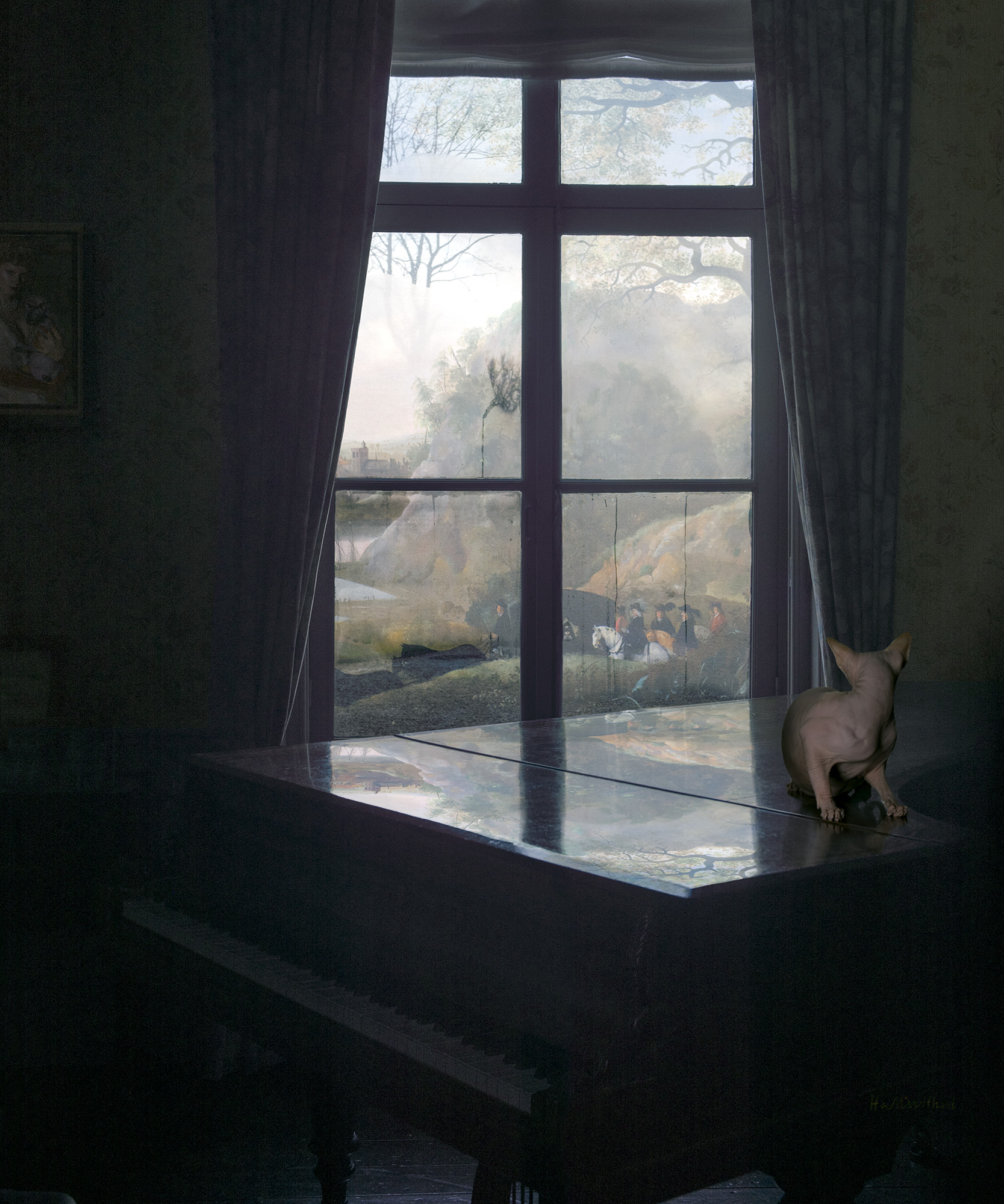
Hans Withoos, Melancholia 2016
In the next work I used the idea of being covered up. In the 17th century it was a luxury to cover yourself up and travel incognito. Today this means something different to most people. I also wanted to show opulence in the way my model is covered through combining both real and painted flowers. On the left side of the painting, above the sunflower, the eyes of a hedgehog come peeping through the flowers. They are like the eyes of a woman wearing a niqab. I’m not making a political statement, just an observation.
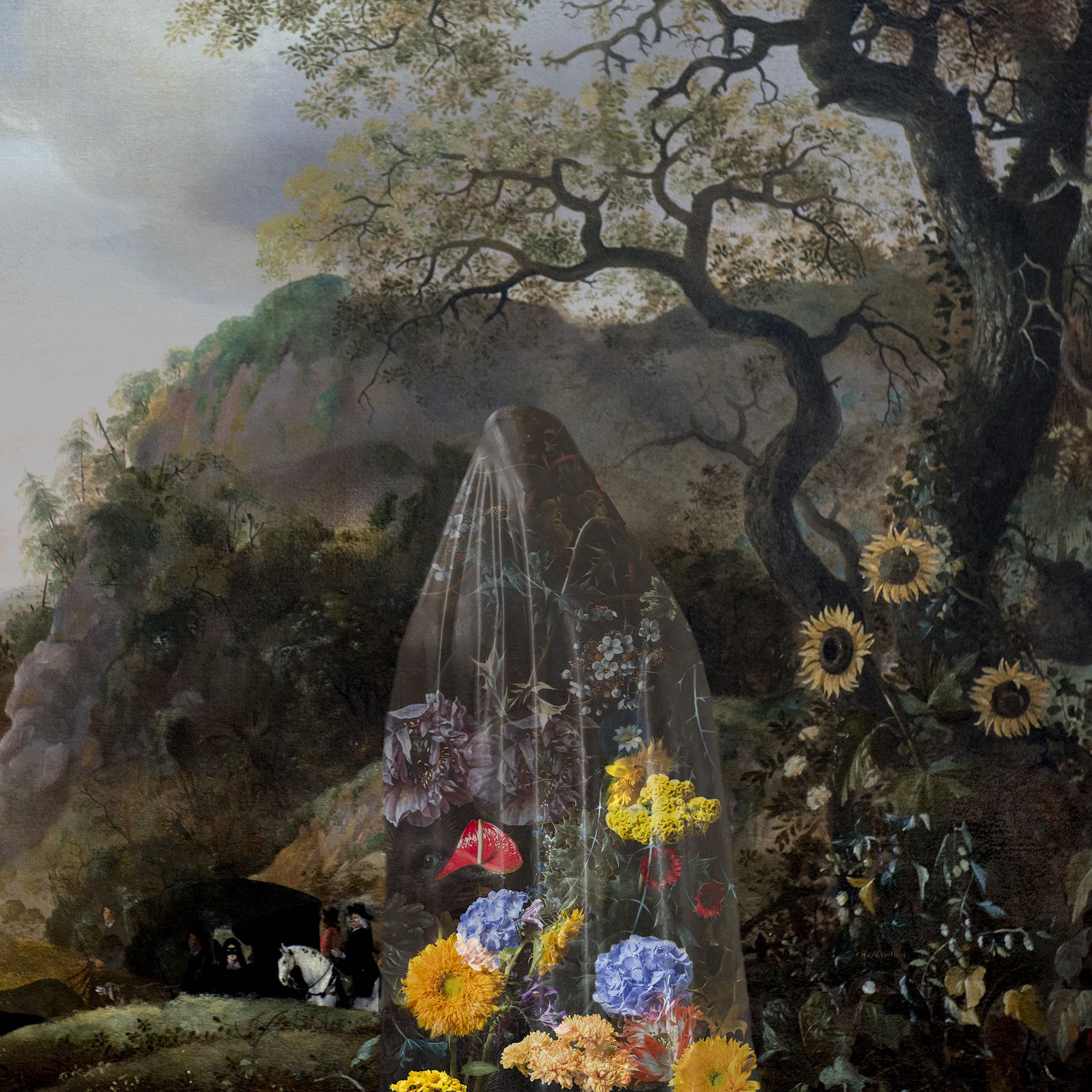
Hans Withoos Incognito Escape 2017
For this work (below), a dyptich, I looked at the original painting and realised that the left side is a white, bright open area, while on the right, everything is quite dark. The way Matthias Withoos paints his trees inspired me to insert an orchid with similarly shaped roots. On the left I added a white orchid, and on the right a black one.
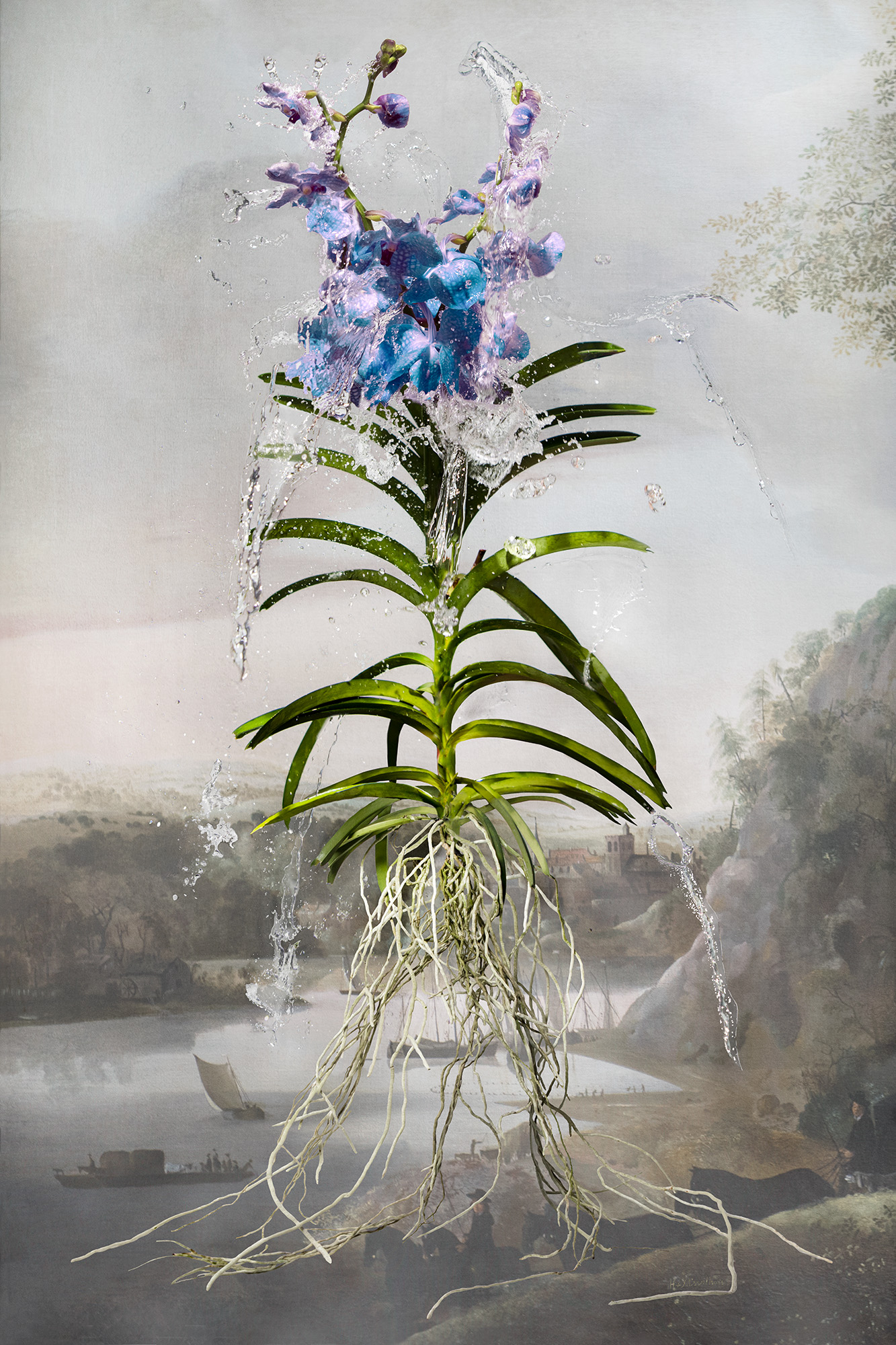
Hans Withoos, Orchid in White, 2017
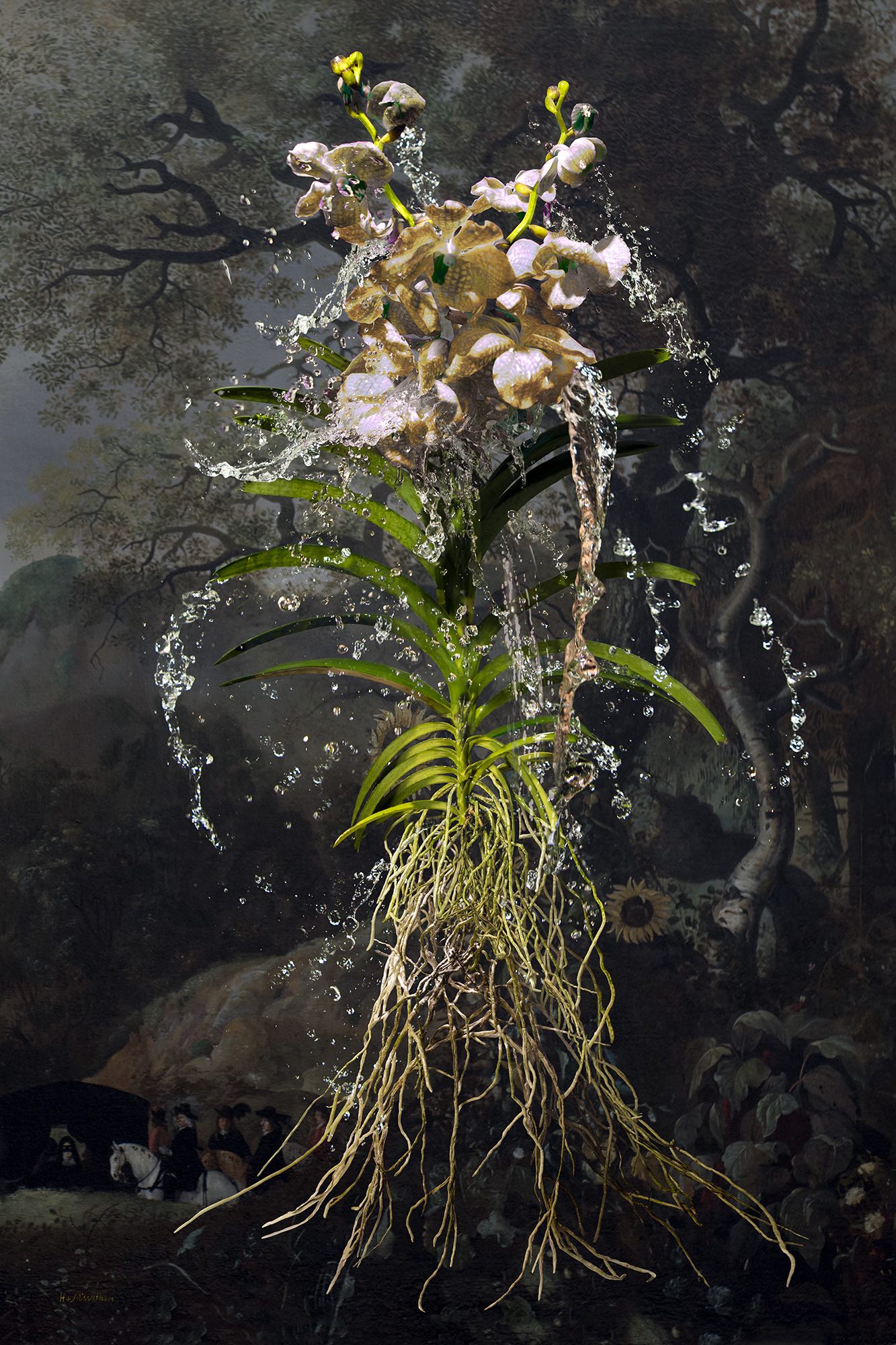
Hans Withoos, Orchid in Black, 2017
In the next work I created a still life with drawings by Matthias Withoos and Alida Withoos (courtesy Rijksmuseum Amsterdam). These still lifes are so detailed that the background needed to be light.
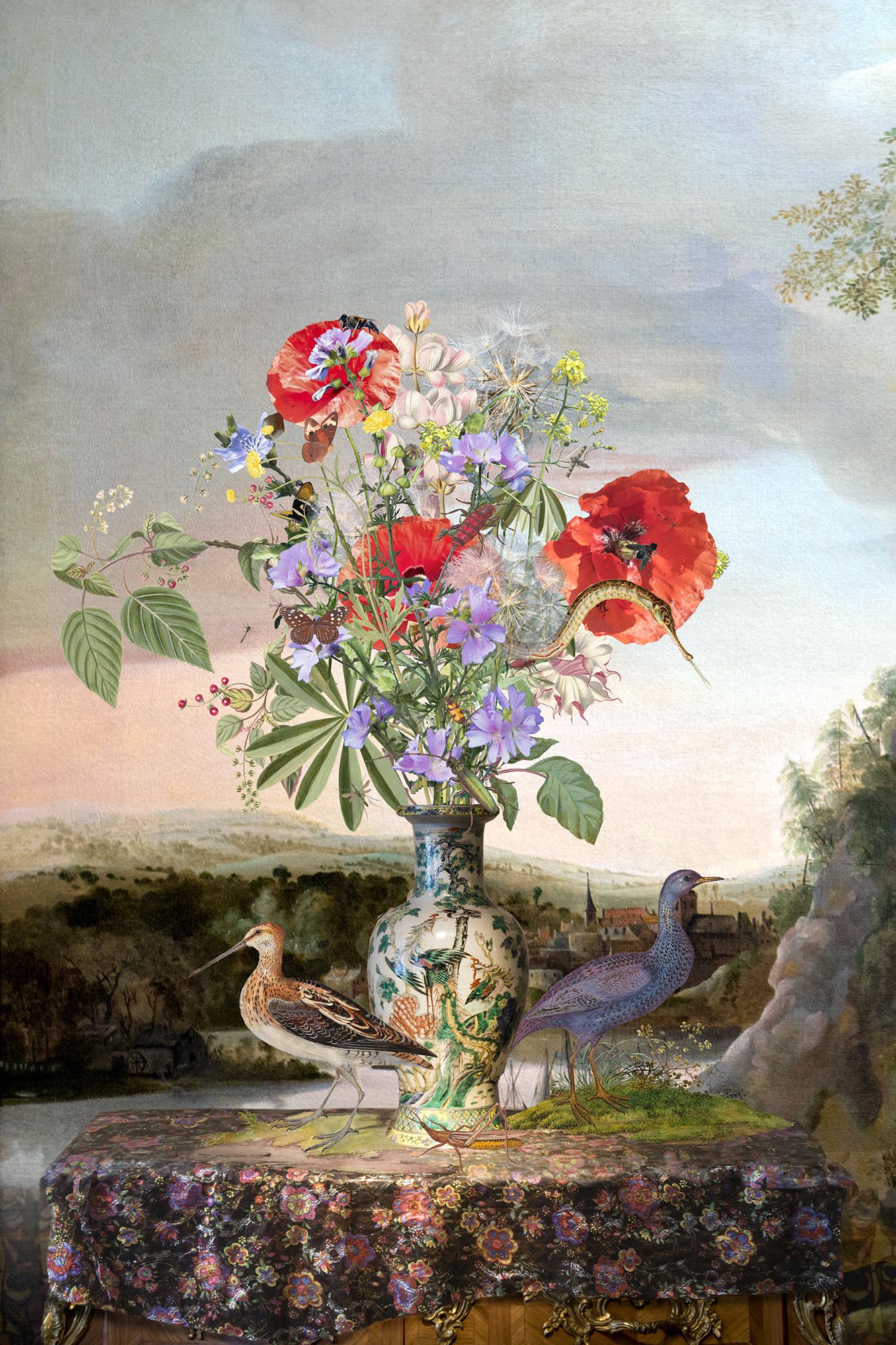
Hans Withoos, Meeting of Beauties, 2017
What is the relationship between your own cultural background and your art?
Good question. I live in Rotterdam, a large multicultural city. It has made me aware of the beauty of its varied inhabitants. Long before the whole cultural issue arose I worked with the people around me, without being aware of their so-called ‘cultural’ backgrounds; this did not mean I wasn’t aware of the differences, but I preferred to embrace them. Two years ago I got a Facebook request from a fashion activist, a beautiful black woman, who wanted to know what it meant to me to frequently choose black people as my subjects. At the time I simply wasn’t aware of this. I just looked at the beauty of people. Nowadays it has become a big issue. I don’t want to be influenced by that, I just need to tell my own story.
As a young boy I grew up in a small town near Eindhoven, set in the woods. In these poetic surroundings, I was able to create my own dream world.
My background as a Catholic altar boy is still very present in my art, I love symbolism, I love abundance. I am still interested in religion although I am not religious.
It was my education at the Tilburg Academy of Art that made me the person I am now. There, we learned to be free thinkers. We had wonderfully open-minded teachers such as Marlene Dumas, Harry Boom, Paul De Nooijer and Mireille Houtzager, who wrote the text for my book ‘Photographic Paintings’ in 2017, discussing 30 years of my work, These teachers encouraged me to be true to my own identity, to bring my dreams to life, At the Academy of Art I started to work with photographic paintings; I painted on pictures.

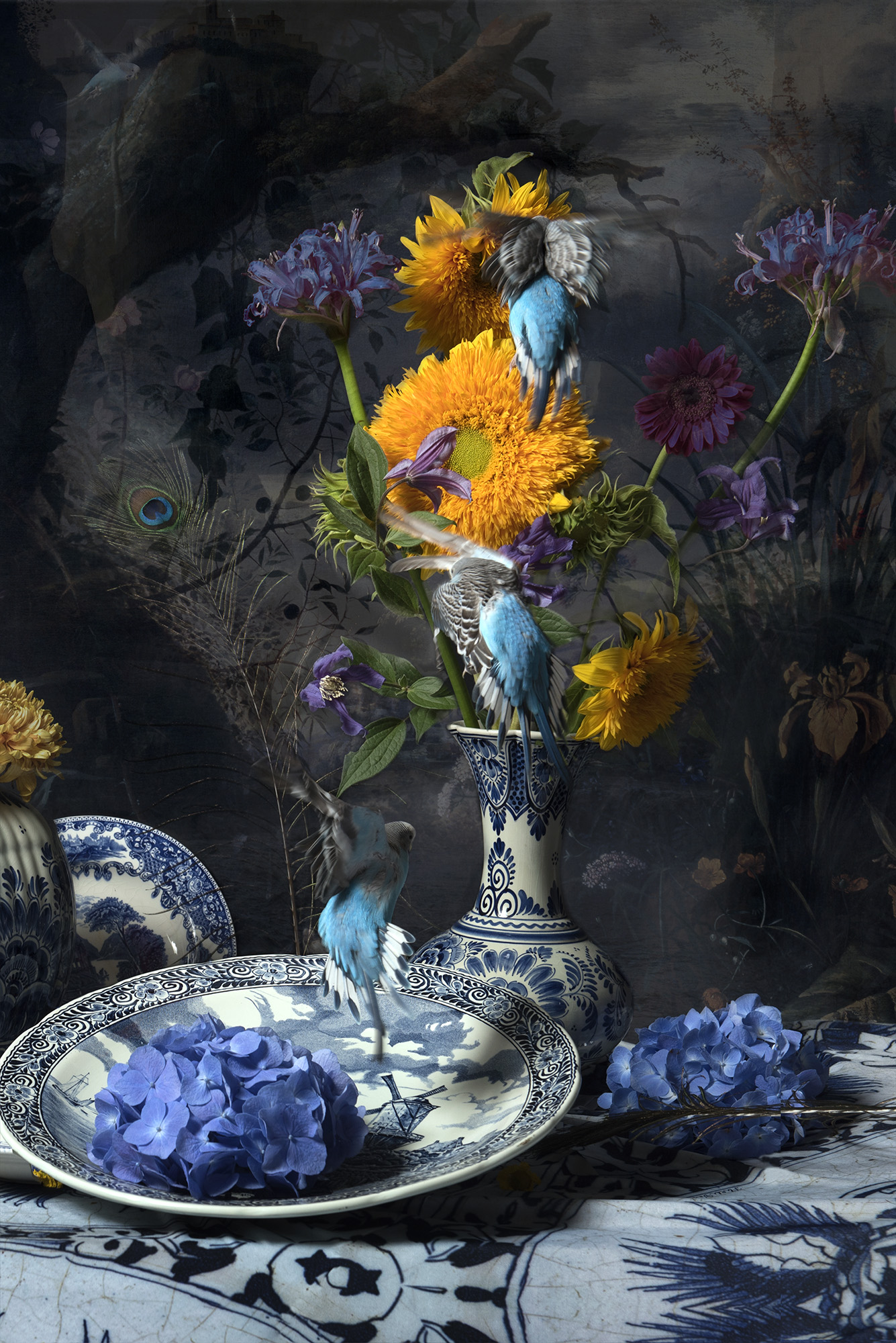
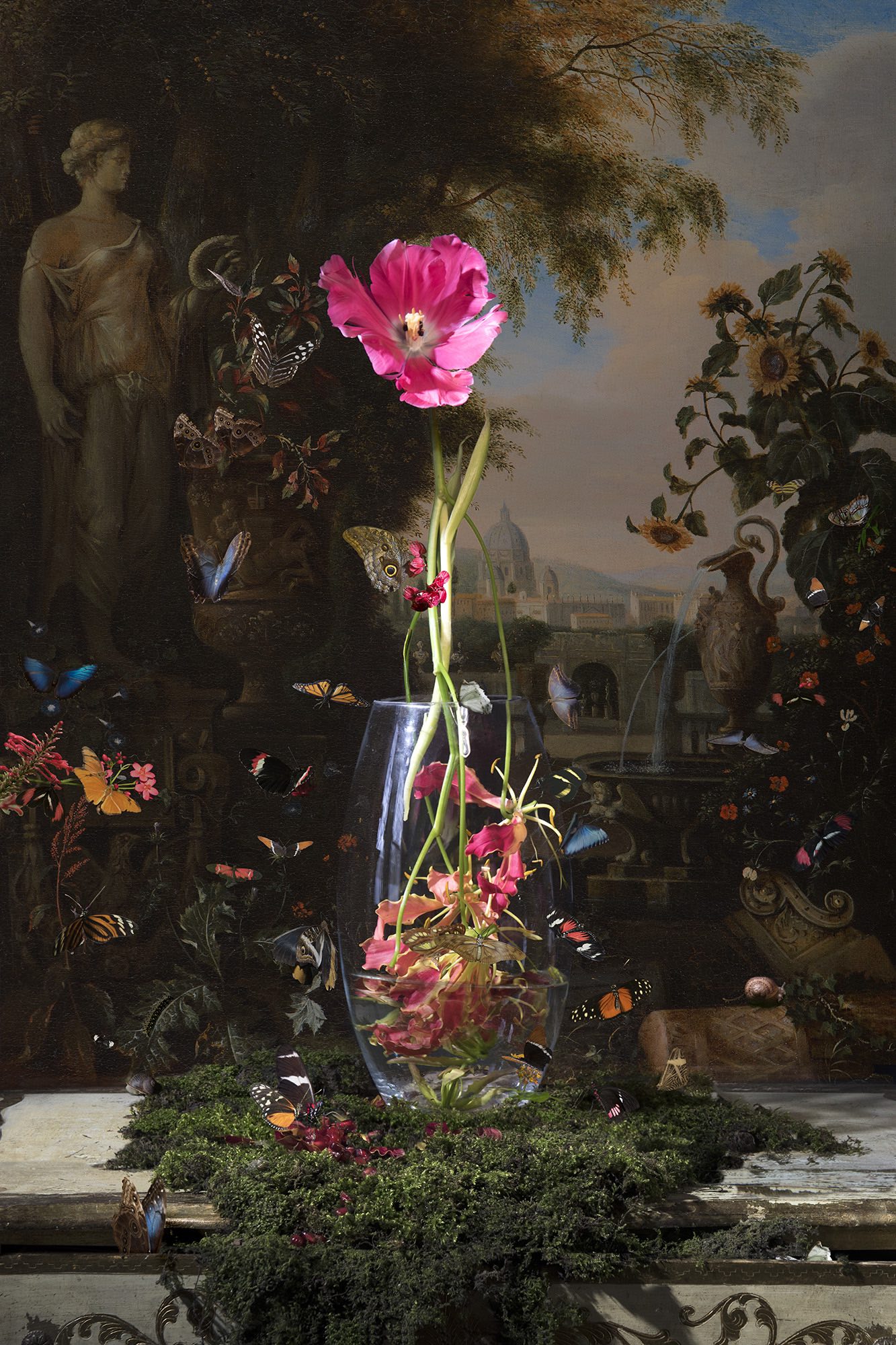
I think that we artists all have our own story to tell.
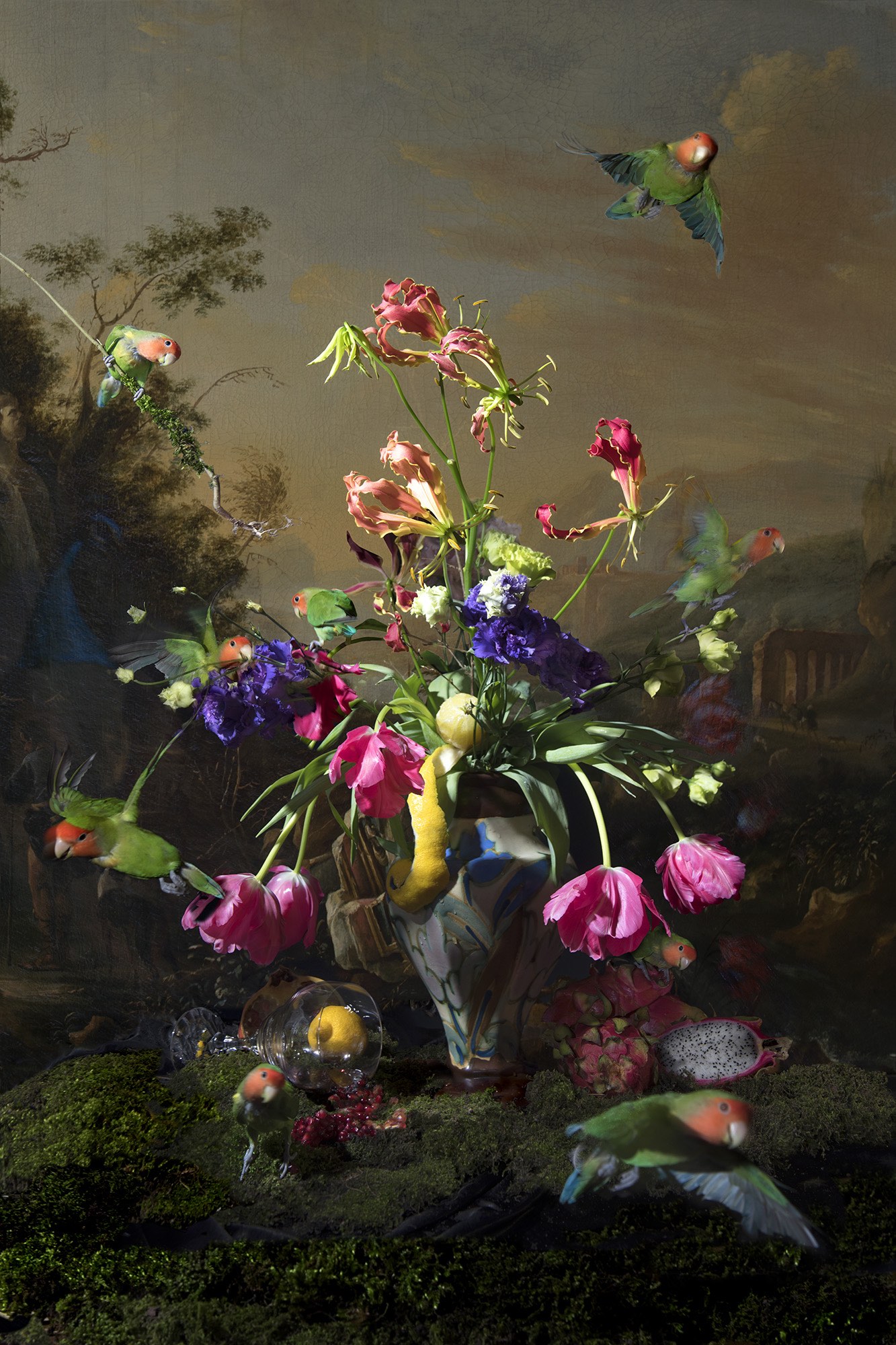
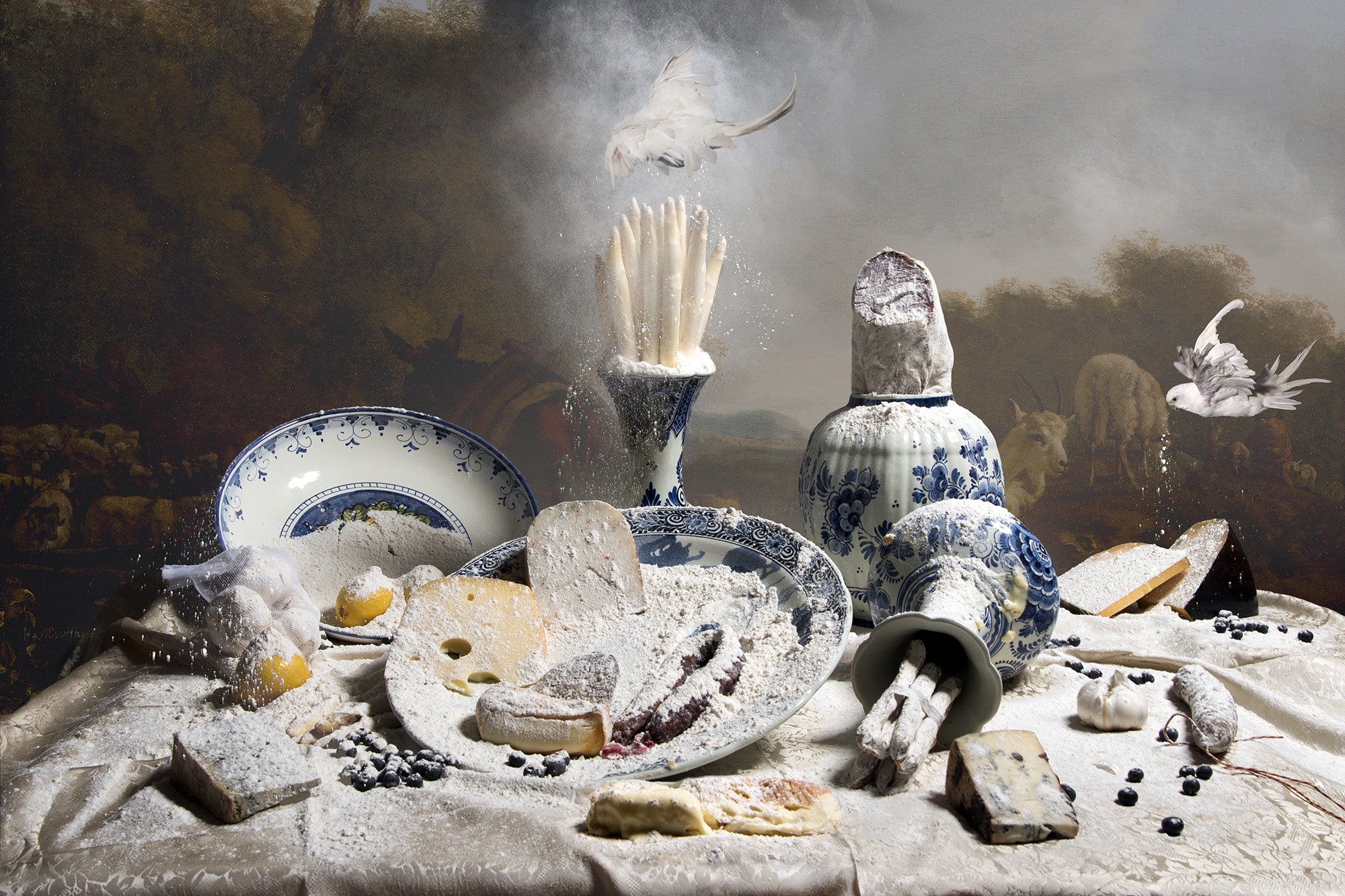
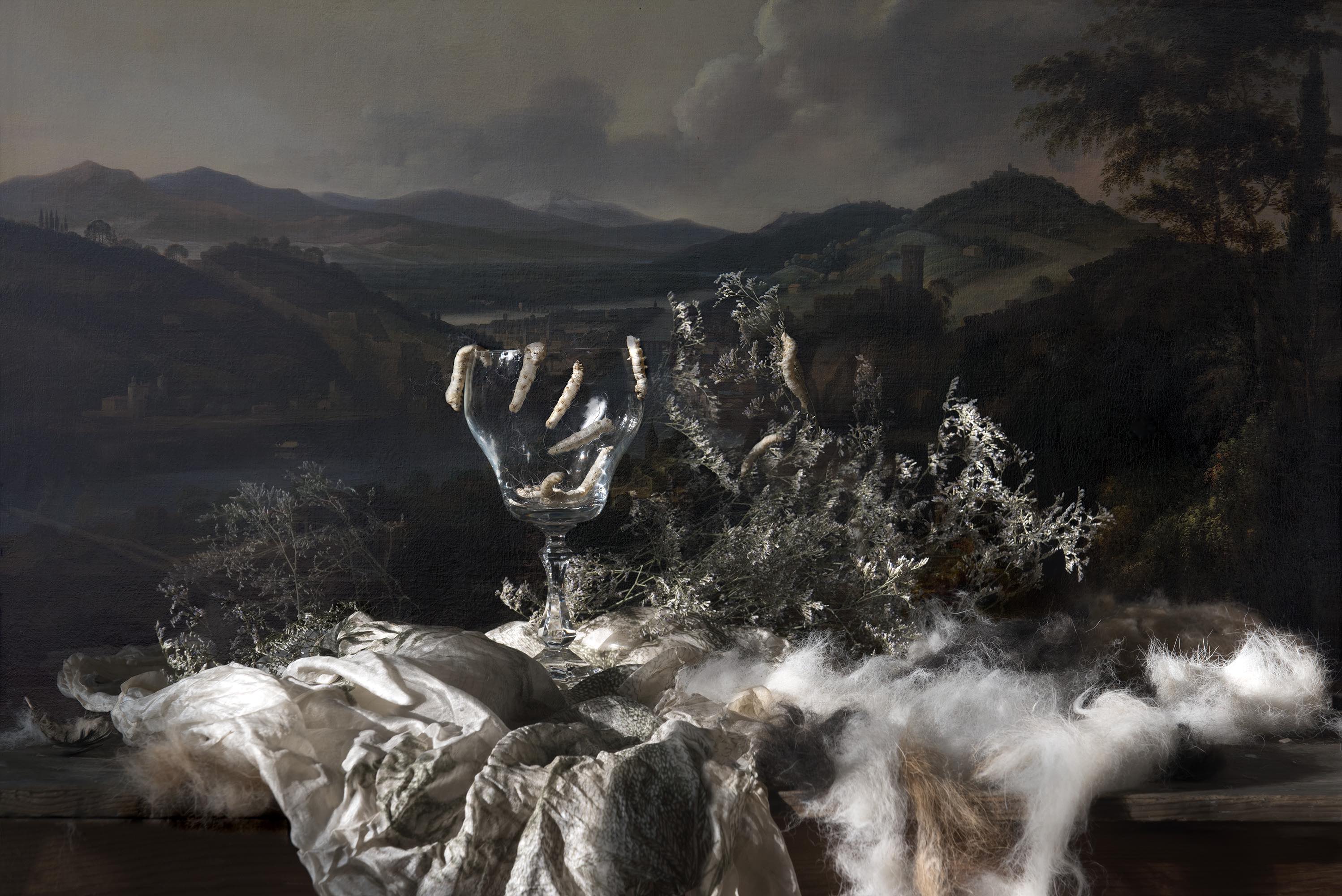
My motto in life is:
«Reality is nothing but your own imagination»
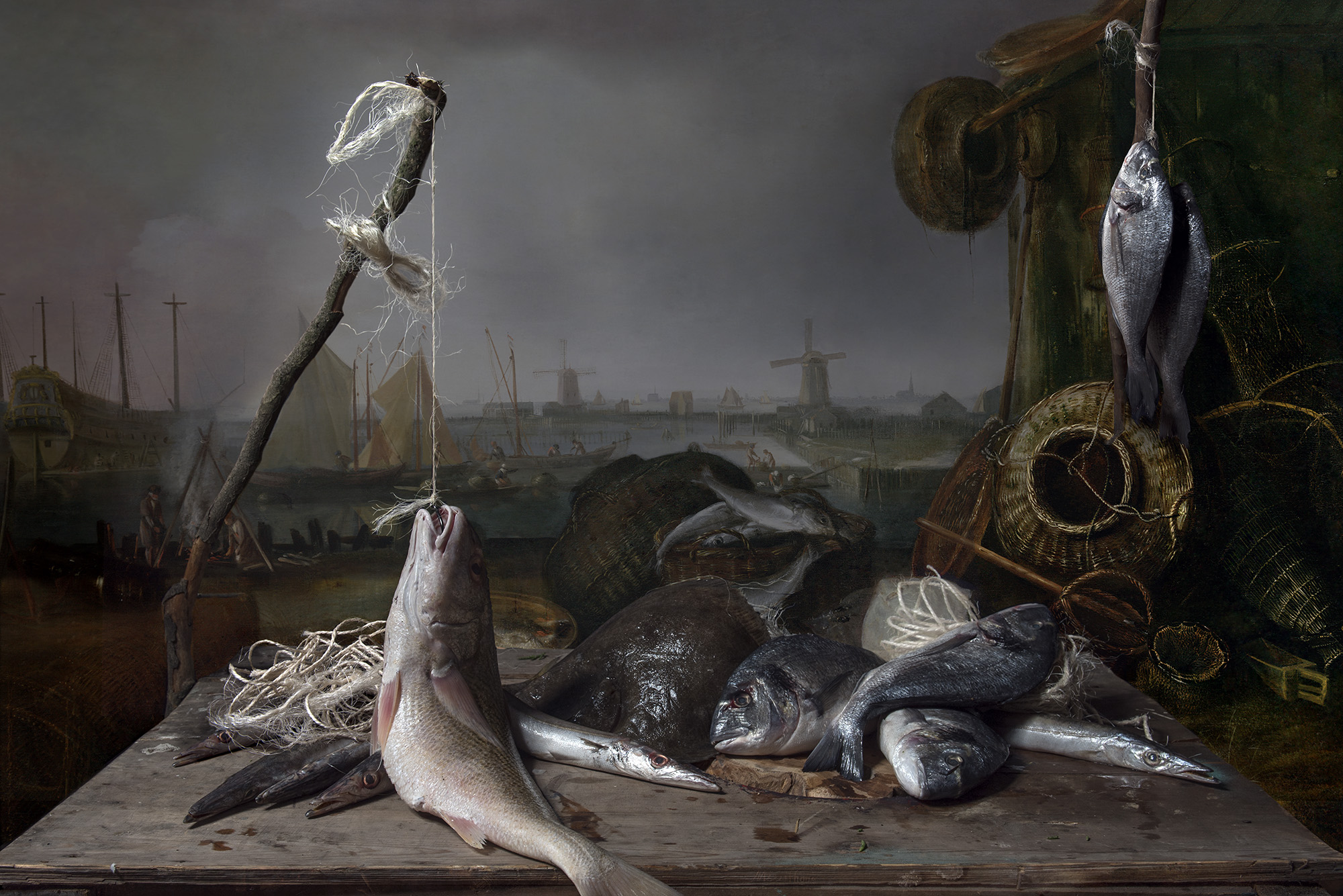
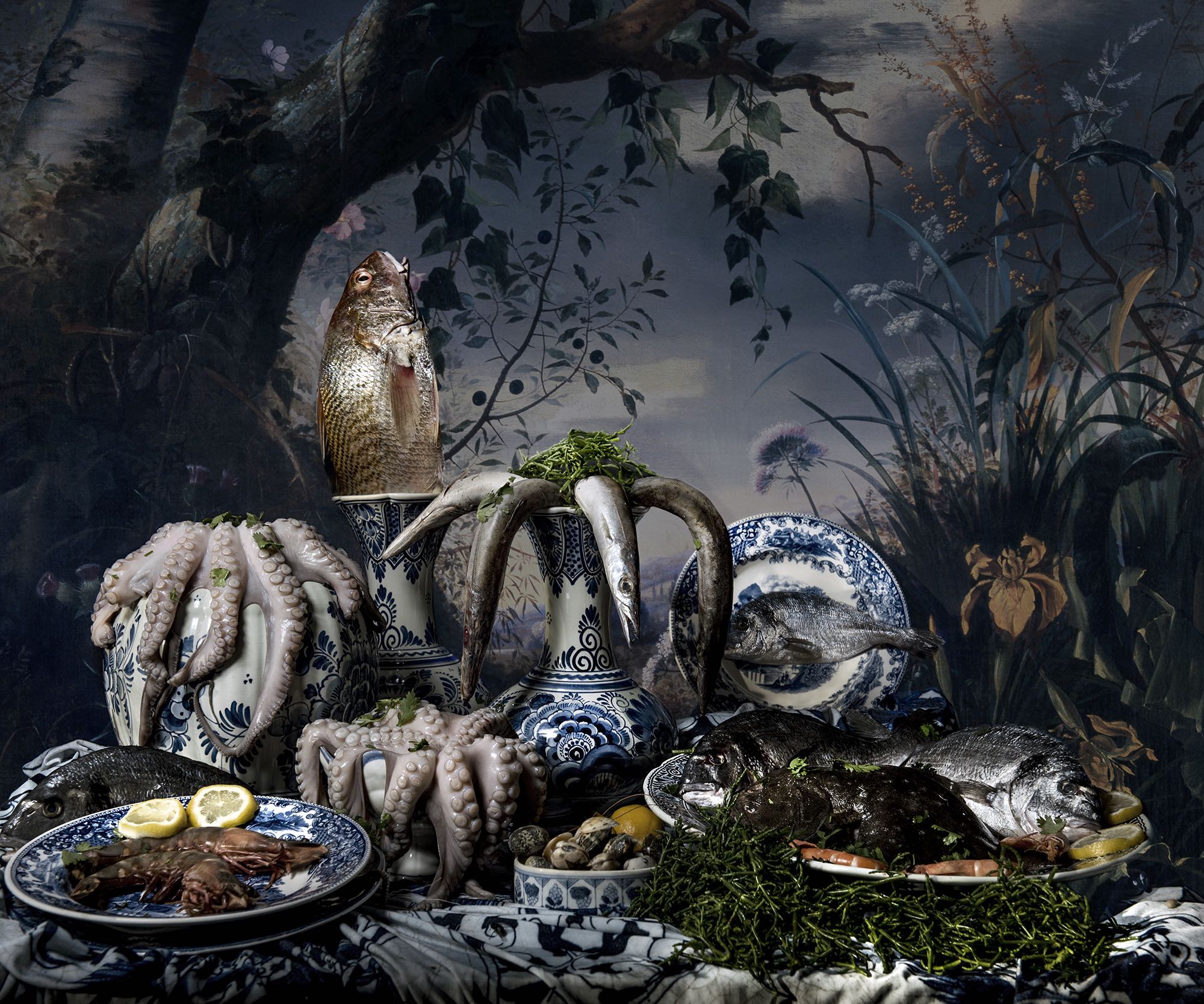
“The images don’t show a critical perspective,
but rather an observant one”.
